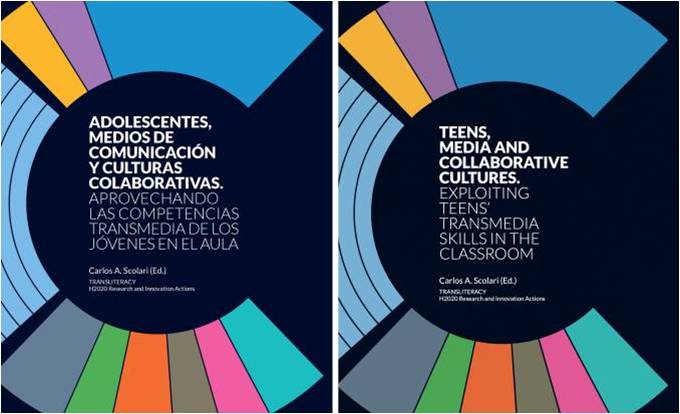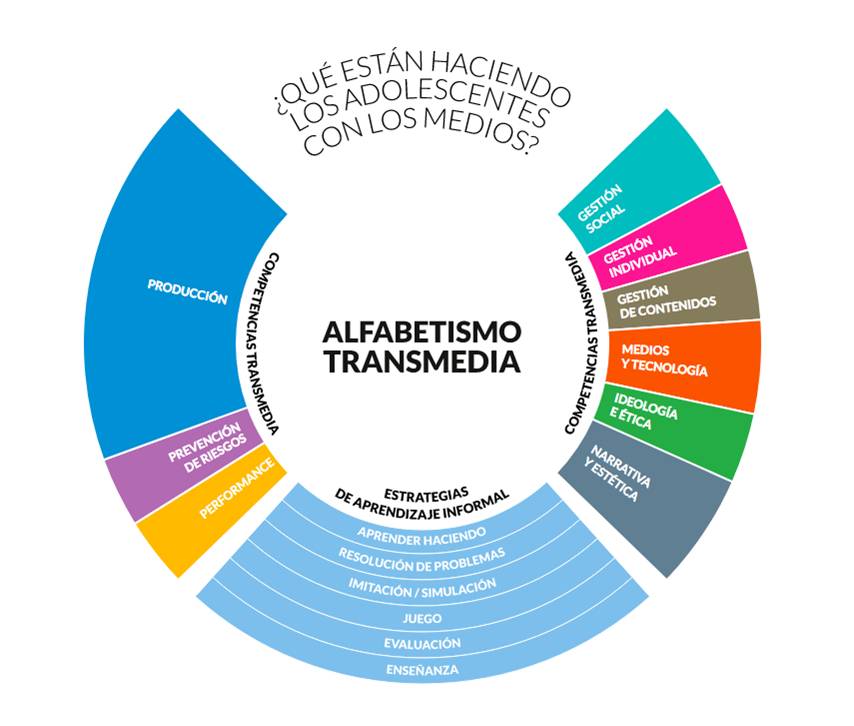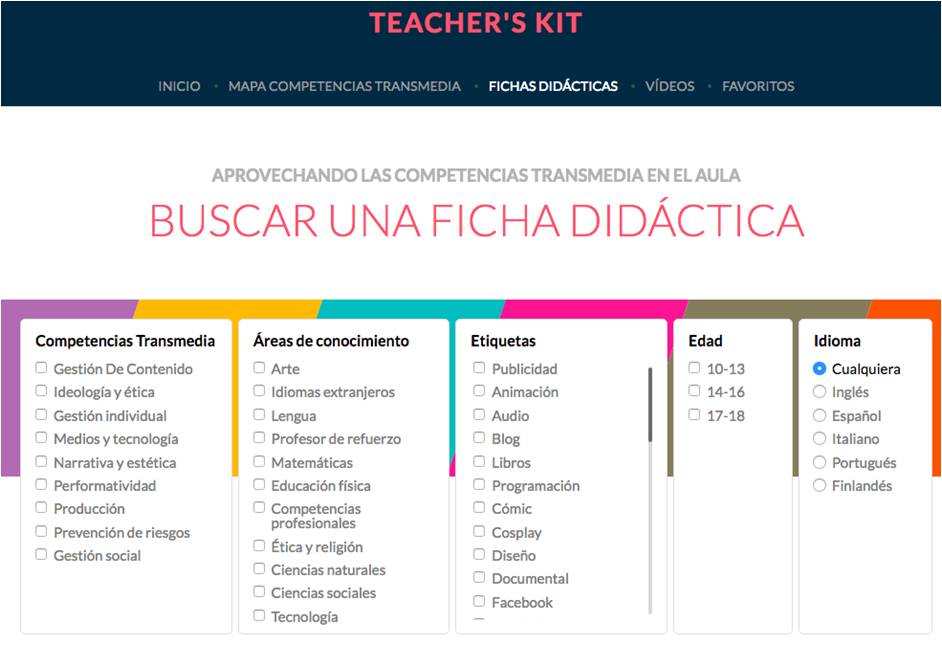TransMedia Literacy, the European project that takes advantage of young people’s transmedia skills for their own education
TransMedia Literacy, the European project that takes advantage of young people’s transmedia skills for their own education
Within the framework of the H2020, it has been led by Carlos Alberto Scolari, professor and researcher at the Department of Communication, and has involved 50 researchers from eight countries. Their results, in addition to several scientific articles, provide a White Paper with the main findings of the research published in five languages and a series of educational resources available to secondary school teachers.

What are young people doing with the media outside the classroom? How can we take advantage of the skills they acquire in their free time to improve their formal education? The European project Transmedia Literacy, led by Carlos Alberto Scolari, professor at the Department of Communication and coordinator of the MEDIUM research group involving 50 researchers from Australia, Colombia, Spain, Finland, Italy, Portugal, United Kingdom and Uruguay, has been trying to answer this question for the last three years.
Research findings: Overcoming the concept of “digital native”
The main results of the Transmedia Literacy project have been published in a White Paper in five languages, and in another volume aimed at the teaching community, published in Spanish and English. This document aims to explain the transmedia skills identified and informal learning strategies, as well as guidelines for developing them within the classroom.
As evidenced by this research, whenever young people play video games, upload photos to Instagram and share them, or write fan fiction based on their favourite characters, not only are they cultivating a hobby or passing the time, but latently they are cultivating skills that help them navigate in an increasingly hyperlinked world. But, as professor Scolari warns, this contradicts any universal diagnosis on young people’s digital media skills: “Obviously, not all young people have these skills or develop them to the same degree: while one teenager might develop many productive or social management skills, another may have very little ability to detect and analyse stereotypical representations in the media”.

This unequal distribution of skills, as well as the marginal presence of some of them as is the case of those related to ideology and values, and sophisticated uses of ICTs, have led the project researchers to reject once again the concept of digital native which, since the term was first coined by Mark Prensky in 2001, has spread like wildfire in education circles. ”We have not found a single digital native but rather a complex world of interactions, practices, fears, conflicts, joys, participation and collaboration”, Scolari maintains.
So, although most young people participate actively in social networks, and share photos and videos, that does not mean that they make optimal use of them. In this sense, the researchers have identified three types of users: those who use social networks casually and in a utilitarian way; others who produce in an aspirational way, paying attention to others and displaying a strong sense of self-criticism to improve; and others whose degree of skill corresponds to that of an expert user, fully aware of the possibilities offered by these communication platforms.
With regard to the social concern about privacy and the risks presented by the network, the investigation has detected some young people who are aware of the economic interests of the main social network companies with the use of users’ personal data, and they also try, to the extent possible, to avoid sharing their real names or their home address. However, other young people have also been detected who are not as concerned about these issues, especially when it comes to sharing photos and videos on some digital platforms, even though they know that this self-exposure always involves a risk.
Educational resources the project provides for teachers
In addition to scientific findings related to transmedia consumption and production and the informal learning strategies developed by young people, the research team makes available to secondary school teachers a complete kit of educational activities to apply students’ transmedia skills in their classes. The White Paper has a selection of educational fact cards available on the website of the Teacher’s Kit. Both resources can be downloaded free of charge on the Transmedia Literacy project website.

The Teacher’s Kit is a practical adaptation of the transmedia skills and informal learning strategies detected after conducting exhaustive field work consisting of 1,500 questionnaires, 58 workshops in the classroom, and 311 interviews with young people between 11 and 18 years of age.
It consists of a total of 74 educational fact cards which will help teachers to incorporate transmedia skills and informal learning strategies in the classroom. The educational cards can be searched in different ways: by areas of knowledge, student age, resources and media for use in the classroom, or according to transmedia skills. Once the options have been chosen, the search engine will provide a PDF file with the resources that are suited to the needs of each teacher.
Likewise, the Teacher’s Kit has a YouTube channel, composed of 15 videos, which, on the one hand, explain the main results of the research project, and on the other hand, enables viewing some of the activities proposed in the Teacher’s Kit that aim to illustrate through case studies how transmedia skills can be taken advantage of in schools.
One of the activities proposed by the research team focuses on creating video tutorials for platforms like YouTube, one of the most popular digital spaces for young people both to find information and for entertainment. Through the in-depth analysis of the contents that are being taught in the classroom, students will develop their skills of production, synthesis and reflection to teach their classmates new skills in audiovisual format. An example of this can be found in the educational activity Teaching science with YouTube on the Transmedia Literacy project video channel.
Reference works:
Transmedia Literacy project White Paper (text available in Spanish, English, Portuguese, Italian, Finnish): https://repositori.upf.edu/handle/10230/33910
Scolari C. A (2018). Teens, media and collaborative cultures: exploiting teens’ transmedia skills in the classroom, Barcelona: Pompeu Fabra University. https://repositori.upf.edu/handle/10230/34245?locale-attribute=en
Scolari C. A (2018). Adolescentes, medios de comunicación y culturas colaborativas: aprovechando las competencias transmedia de los jóvenes en el aula. Barcelona: Pompeu Fabra University. https://repositori.upf.edu/handle/10230/34245?locale-attribute=en
Pereira, S., Fillol, J., & Moura, P. (2018). Levar os media para a escola. Agenda de atividades de transliteracia. Braga (Portugal): Universidade do Minho. Centro de Estudos de Comunicaçao e Sociedade. ISBN: 978-989-8600-74-5
Márquez, I., & Ardèvol, E. (2018). “Hegemonía y contrahegemonía en el fenómeno Youtuber”, Desacatos. Revista de Ciencias Sociales, 56. pp. 34-39.
Ardèvol, E., & Màrquez, I. (2018). “El youtuber como celebridad mediática: entre la autenticidad y el mercado”. Rizomas, 5(2), pp.72-87.
Scolari, C.A. (2018) ¿Qué hacen los adolescentes con los medios? UPF e-news. https://www.upf.edu/web/e-noticies/opinion/-/asset_publisher/wEpPxsVRD6Vt/content/id/155030742/maximized#.WuBIhtNuZ-X
